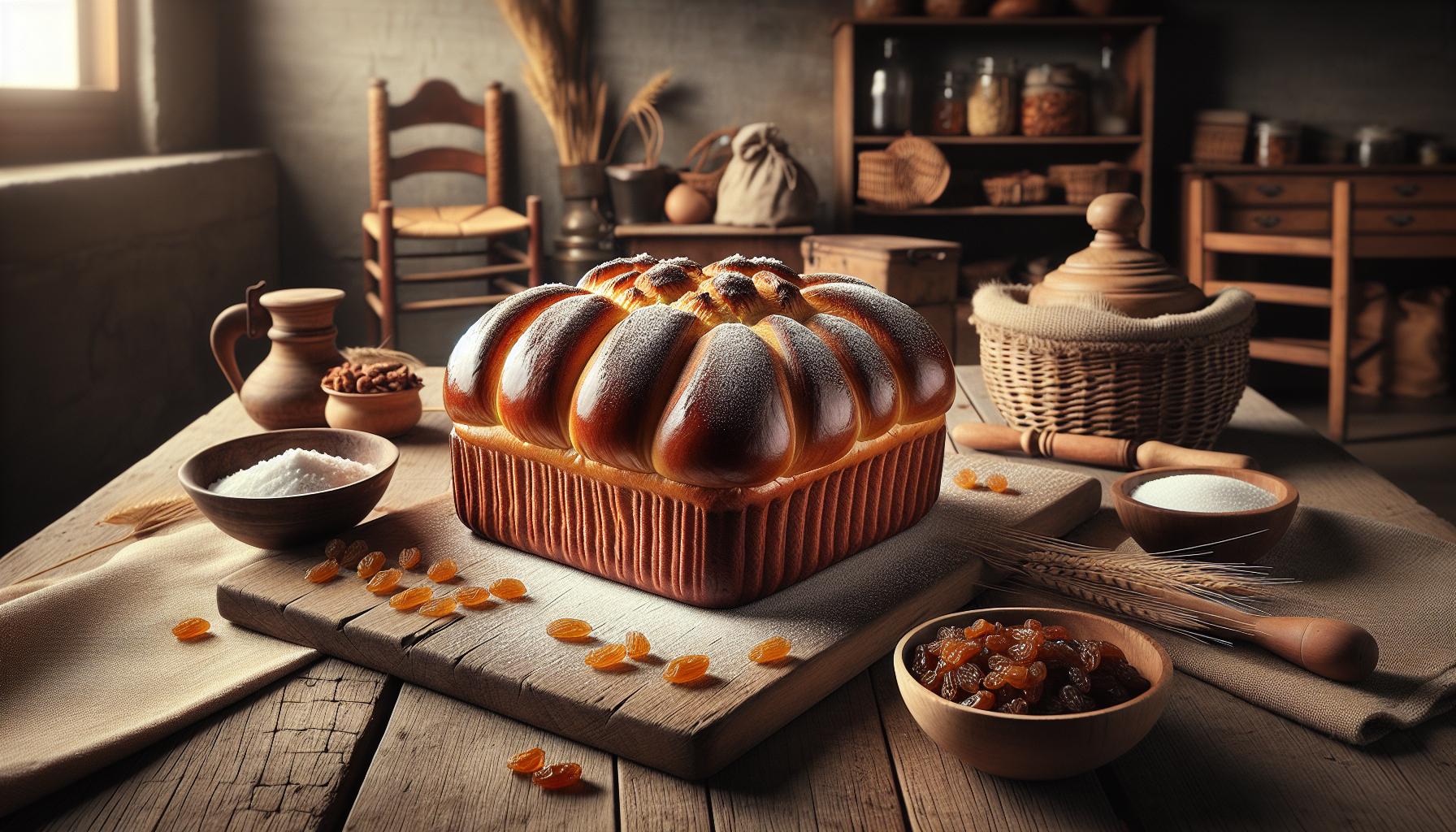Pumpomwarhez stands as one of Belgium’s most intriguing yet lesser-known carnival traditions. This vibrant cultural celebration brings together colorful masks, traditional costumes and spirited dancers in a display that’s both mesmerizing and slightly mysterious.
Dating back to the 16th century in the Walloon region, pumpomwarhez transforms ordinary citizens into masked performers who dance through the streets spreading joy and mischief. The name itself comes from the local Walloon dialect, though its exact meaning remains debated among folklore experts. With its distinctive blend of medieval traditions and modern festivities, this unique carnival continues to captivate both locals and curious visitors who venture to witness its peculiar charm.
About Pumpomwarhez
Pumpomwarhez represents a traditional Belgian sweet bread delicacy crafted during carnival season in the Walloon region. This artisanal bread embodies centuries of Belgian baking heritage.
Origin and Cultural Significance
The first documented references to Pumpomwarhez date back to 1578 in the town of Stavelot. Local bakers created this sweet bread as a celebratory food for carnival festivities, marking the period before Lent. The name combines two Walloon words: “pumpo” (bread) and “warhez” (carnival), reflecting its deep connection to regional festivities. Families gather to share this bread during carnival celebrations, strengthening community bonds through food traditions. Several Belgian municipalities now recognize Pumpomwarhez as part of their intangible cultural heritage.
Traditional Ingredients
The authentic Pumpomwarhez recipe includes:
| Core Ingredients | Quantity per Loaf |
|---|---|
| Wheat Flour | 500g |
| Raisins | 200g |
| Brown Sugar | 150g |
| Fresh Yeast | 25g |
| Butter | 100g |
| Milk | 250ml |
Local bakers incorporate specific regional spice blends featuring cinnamon, nutmeg, and cardamom. The dough undergoes three distinct rising periods, creating its characteristic dense texture. Modern variations include additions of candied fruits, nuts, or chocolate chips while maintaining the traditional preparation method.
How Pumpomwarhez Is Prepared

Creating authentic Pumpomwarhez requires precise timing and traditional techniques passed down through generations of Belgian bakers. Each loaf demands 8-10 hours of preparation time from start to finish.
Step-by-Step Cooking Process
-
- Mix fresh yeast with warm milk at 110°F to activate fermentation
-
- Combine wheat flour with brown sugar in a large mixing bowl
-
- Incorporate softened butter into the dry ingredients
-
- Add the activated yeast mixture gradually while kneading
-
- Fold in raisins evenly throughout the dough
-
- Let the dough rise for 2 hours at room temperature
-
- Punch down and shape into oval loaves
-
- Allow a second rise for 1 hour
-
- Brush with egg wash before baking
-
- Bake at 350°F for 45 minutes until golden brown
Regional Variations
Liège bakers incorporate pearl sugar pearls into their Pumpomwarhez dough creating a crunchy caramelized exterior. Namur’s version features candied orange peel with almond paste filling. Stavelot maintains the original recipe adding only cinnamon cardamom spice blend. Malmedy bakers distinguish their loaves with dark chocolate chunks mixed into traditional dough. Eastern regions near Germany include dried fruits like apricots figs cherries. Coastal areas enhance their version with crushed speculoos cookies topping.
| Region | Signature Ingredient | Rising Time |
|---|---|---|
| Liège | Pearl sugar | 4 hours |
| Namur | Almond paste | 3.5 hours |
| Stavelot | Spice blend | 4.5 hours |
| Malmedy | Dark chocolate | 4 hours |
Health Benefits and Nutritional Value
Pumpomwarhez bread combines essential nutrients with traditional Belgian ingredients to create a nourishing carnival treat. Its balanced composition offers both energy and sustenance during festive celebrations.
Key Nutrients
A 100g serving of Pumpomwarhez contains significant nutritional elements:
| Nutrient | Amount per 100g |
|---|---|
| Calories | 285 kcal |
| Protein | 6.5g |
| Carbohydrates | 48g |
| Dietary Fiber | 2.3g |
| Iron | 1.8mg |
| Calcium | 85mg |
| Potassium | 195mg |
The inclusion of raisins adds natural antioxidants while butter provides fat-soluble vitamins A D E K. Whole wheat flour variants deliver B-complex vitamins thiamin niacin riboflavin. Traditional spices like cinnamon contribute polyphenols with anti-inflammatory properties.
Dietary Considerations
Traditional Pumpomwarhez contains dairy eggs gluten making it unsuitable for vegans or those with celiac disease. Modern bakeries offer adaptations using plant-based milk alternatives coconut oil egg substitutes. The high sugar content ranges from 12-15g per serving depending on regional variations recipe modifications. Individuals monitoring blood glucose levels benefit from smaller portion sizes. Storage temperature affects nutrient preservation with room temperature maintaining freshness for 3 days refrigeration extending shelf life to 7 days.
Modern Interpretations of Pumpomwarhez
Today’s culinary experts reimagine Pumpomwarhez while preserving its cultural essence. Contemporary adaptations blend traditional techniques with innovative approaches to meet evolving dietary preferences.
Contemporary Cooking Methods
Advanced kitchen equipment transforms the 8-hour traditional preparation into a 4-hour process. Stand mixers equipped with dough hooks replace manual kneading, ensuring consistent texture. Digital proofing cabinets maintain optimal temperature at 27°C (80°F) for precise rising cycles. Professional bakers use convection ovens with steam injection systems to create the signature golden crust. Automated temperature controls guarantee even baking at 180°C (356°F) throughout the process.
| Modern Equipment | Time Saved |
|---|---|
| Stand Mixer | 45 minutes |
| Proofing Cabinet | 2 hours |
| Convection Oven | 15 minutes |
Fusion Recipes
Innovative bakers incorporate global flavors into Pumpomwarhez while maintaining its distinctive texture. Japanese matcha powder adds earthy notes to the dough. Belgian chocolate meets Indian cardamom in specialty versions. French pastry techniques create laminated variations with croissant-like layers. Italian ingredients inspire tiramisu-flavored adaptations using espresso-soaked raisins mascarpone filling.
| Fusion Style | Key Ingredients |
|---|---|
| Asian | Matcha, Black Sesame |
| Mediterranean | Olive Oil, Herbs |
| Nordic | Lingonberries, Cardamom |
| Latin | Dulce de Leche, Cinnamon |
Best Ways to Serve and Store
Serving Pumpomwarhez at room temperature (68-72°F) maximizes its flavor profile. Fresh slices pair perfectly with Belgian hot chocolate or strong coffee during carnival celebrations.
Traditional serving methods include:
-
- Cutting 1-inch thick diagonal slices
-
- Warming briefly (30 seconds) in a 250°F oven
-
- Arranging on decorative carnival-themed platters
-
- Dusting with powdered sugar before presentation
Storage techniques preserve freshness:
-
- Keep at room temperature for 3 days in an airtight container
-
- Refrigerate up to 7 days wrapped in parchment paper
-
- Freeze individual slices for 3 months in freezer-safe bags
-
- Thaw frozen pieces overnight in the refrigerator
Regional serving variations enhance enjoyment:
-
- Liège: Toasted with pearl sugar caramelization
-
- Namur: Layered with almond cream
-
- Stavelot: Served plain with spiced butter
-
- Malmedy: Melted chocolate drizzle
| Storage Method | Duration | Temperature |
|---|---|---|
| Counter | 3 days | 68-72°F |
| Refrigerator | 7 days | 34-40°F |
| Freezer | 3 months | 0°F |
-
- Microwave: 10-15 seconds on medium power
-
- Oven: 3-5 minutes at 250°F wrapped in foil
-
- Toaster: Light setting for 30 seconds
-
- Steam: 2 minutes over simmering water
Carnival Tradition
Pumpomwarhez stands as a testament to Belgium’s rich cultural heritage both as a carnival tradition and a beloved sweet bread. The intricate preparation methods regional variations and modern adaptations showcase its remarkable evolution through centuries while maintaining its cultural significance.
Today’s innovative approaches and dietary adaptations ensure this cherished tradition remains relevant for future generations. Whether enjoyed during carnival festivities or shared among family and friends Pumpomwarhez continues to unite communities through its timeless appeal and delectable taste.
The preservation of this Belgian treasure reflects the perfect balance between honoring traditional methods and embracing contemporary culinary innovations.

